Misc
SOFIs
Thank you to the (still only) one person who has filled one out!
Others, please fill one out for this course, the feedback helps me with future courses.
Final Exam
A sample exam is available in Canvas, both without solutions and with solutions.
Wednesday, December 11, 8:00 - 11:20 AM, in our South Hall classroom.
Comprehensive, but concentrates on material since the second hour exam (problem sets 9 through 13, e.g., optimization, L’Hospital’s rule, summations, integrals, the Fundamental Theorem, areas, volumes, etc.)
Designed for about 2 hours, you’ll have 3 hours 20 minutes.
Rules and format otherwise similar to hour exams, especially open-references rules.
I’ll bring donuts and cider.
Review Sessions
3-hour SI next Monday (Dec. 9), 3:00 - 6:00, Fraser 104.
1 hour on study day (Tuesday, Dec. 10), 12:00 - 1:00, in our regular classroom. Bring questions or topics you want to go over.
Last Day for Grading
Wednesday, December 11 (i.e., final exam day).
Please turn in any extra credit you want counted in your grade by then.
Please also complete any late grading appointments by then.
Questions?
How to know if Mathematica and you have the same answers to problem set question 2C?
The question asks about the antiderivative of sin2x cos3x. Mathematica’s answer, even when simplified, looks nothing at all like a person integrating this via intuitively reasonable substitution gets. But consider putting that human solution in for Mathematica to simplify, and see if it simplifies to one of the things Mathematica produces for the integral or its simplified form.
This notebook demonstrates that idea.
Slice Example
A volume with triangular cross sections, and the triangles grow non-linearly. Maybe the volume of a tent that collapsed in the middle:
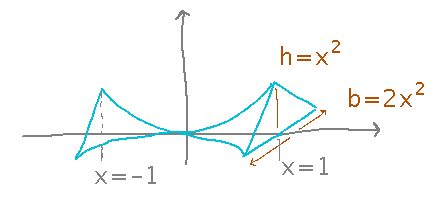
Use triangular cross-sections of the tent as the slices, then the cross-sectional area is given by the area formula for triangles:
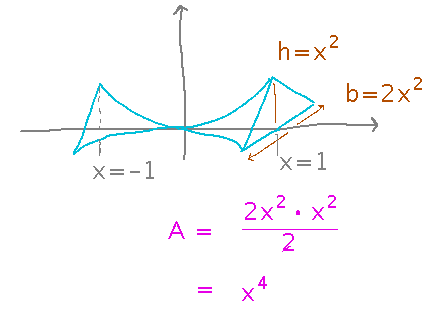
Once you have cross-sectional area for the slices, integrate over the volume. In this case the tent extends from -1 to 1, so those are the bounds for integration:
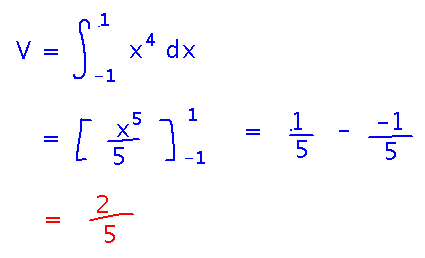
Volumes of Revolution
Volumes that result from rotating a section of a graph around an axis.
“Volumes of Revolution” and “The Disk Method” in section 6.2.
Key Idea(s)
To find volume of revolution of f(x):
- Cross sections are always circles, so cross section area = π r2.
- Radius is always f(x)
- Once you have area, volume is the integral of area over the interval that contains the shape whose volume you want, i.e.,

Examples
What is the volume of a trumpet produced by rotating y = 1/√x between x = 1 and x = 10 around the x axis?
Based on example 6.7

The generic trumpet slice is a circle, so has cross-section area πr2. Furthermore, the radius of this circle is just f(x):
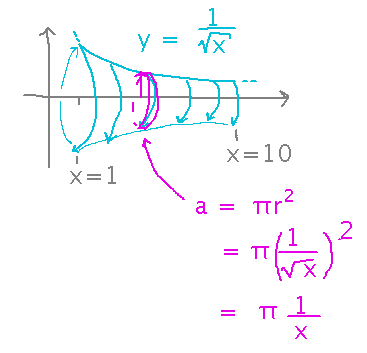
Integrating gives
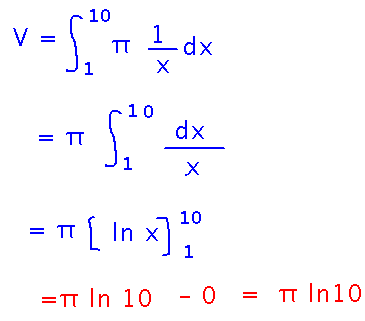
What about the volume of the bowl produced by rotating y = x2 around the y axis, for 0 ≤ y ≤ 1?
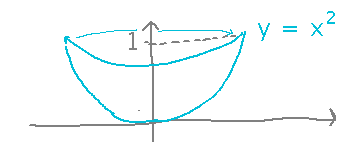
Think about this over the weekend; we’ll start Monday by solving it.
Next
The bowl.
Then slices in the form of washers.
Read “The Washer Method” in section 6.2.